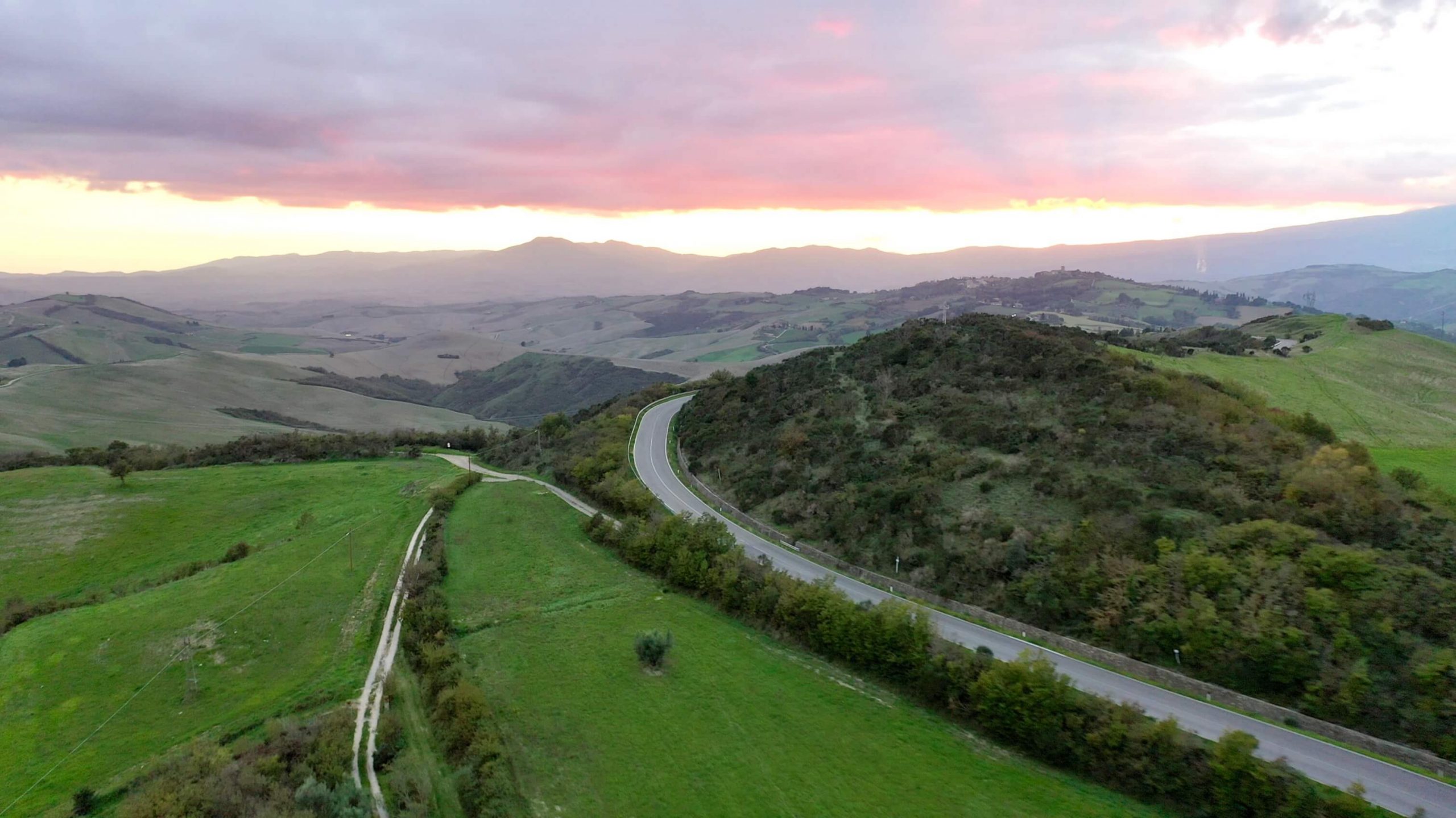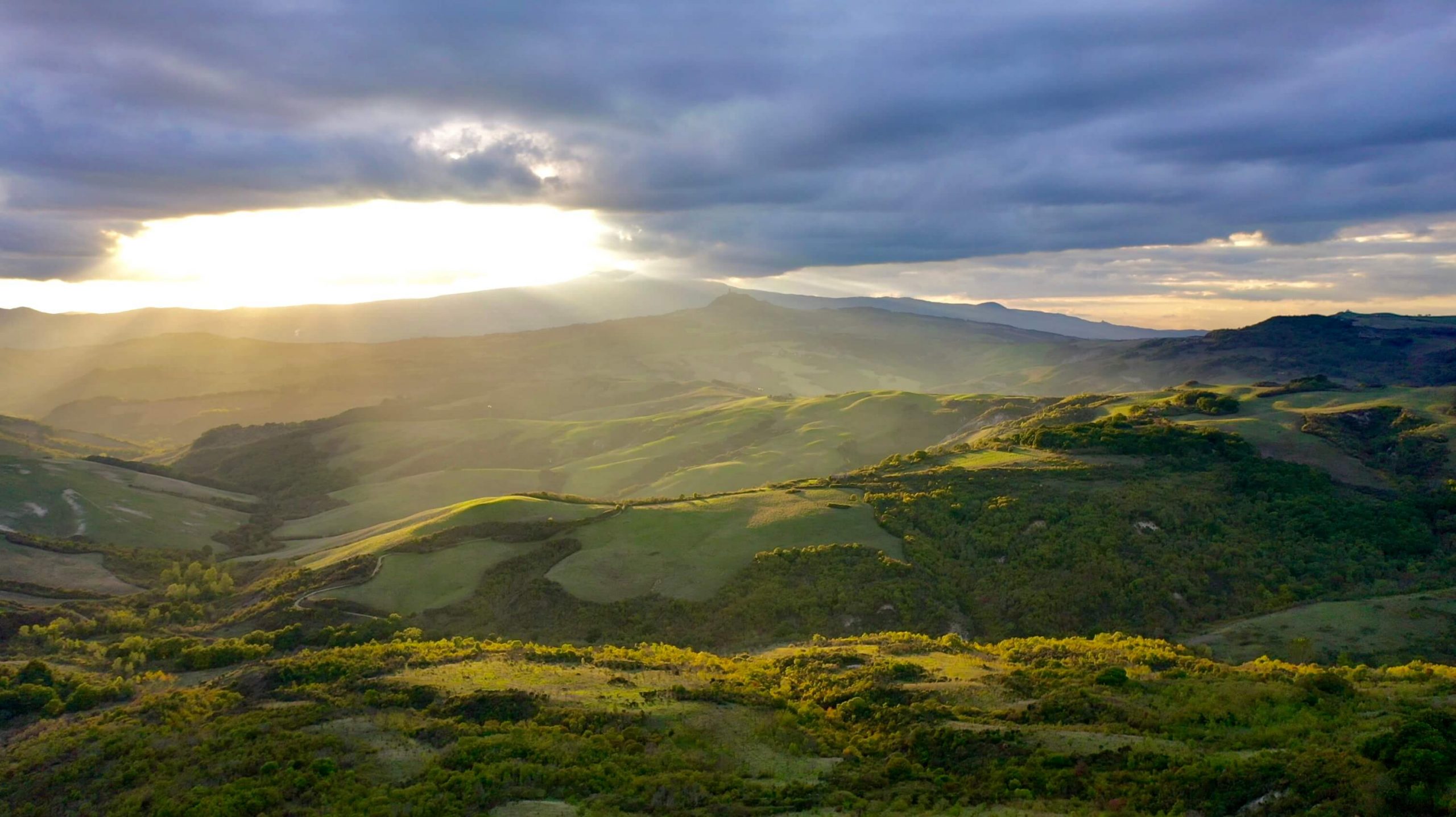
Due to the lengthy content of our monthly newsletter and the desire to be more accurate on wine arrival timing, we are breaking it up into two segments each month, delivered on the first and third Fridays. Let’s dig in!
We’re adding our trade and consumer events to the newsletter so you know what is going on!
Austria’s Riesling and Grüner Veltliner wizard, Michael Malat, will be in California November 8-11. He will be at the following events/dinners:
Thursday, November 10th, Austrian winegrower Michael Malat at Nari in San Francisco. Join Michael and Nari sommelier, Sam Zelver, and The Source’s Danny DeMartini at this fabulous contemporary Thai restaurant. Call to reserve at (415)-868-6274
Friday, November 11th, Austrian winegrower Michael Malat at Napa Valley’s Compline Wine Shop with sommelier/owners Matt Stamp and Ryan Stetins, and The Source’s Hadley Kemp from 6:30pm – 7:30pm. Tickets available for purchase at https://complinewine.com/collections/wine-education/products/fancy-flight-night-with-michael-malat
Saturday, November 12th at Santa Barbara’s Bacara Resort, The Source’s Leigh Readey will be pouring donated wines at the Santa Barbara Vintners Foundation Gala Dinner and Live Auction benefiting Direct Relief and Community Health Centers. Tickets can be found at https://sbwineauction.org/
Wednesday, November 16th at The Anchovy Bar in San Francisco, The Source will be featured for their new dinner series with sommelier Adam Robins and The Source’s Danny DeMartini. Wines poured will include Galicia’s Manuel Moldes and Augalevada, and Piemonte’s Luigi Spertino and Monti Perini. Reservations at https://www.theanchovybar.com/
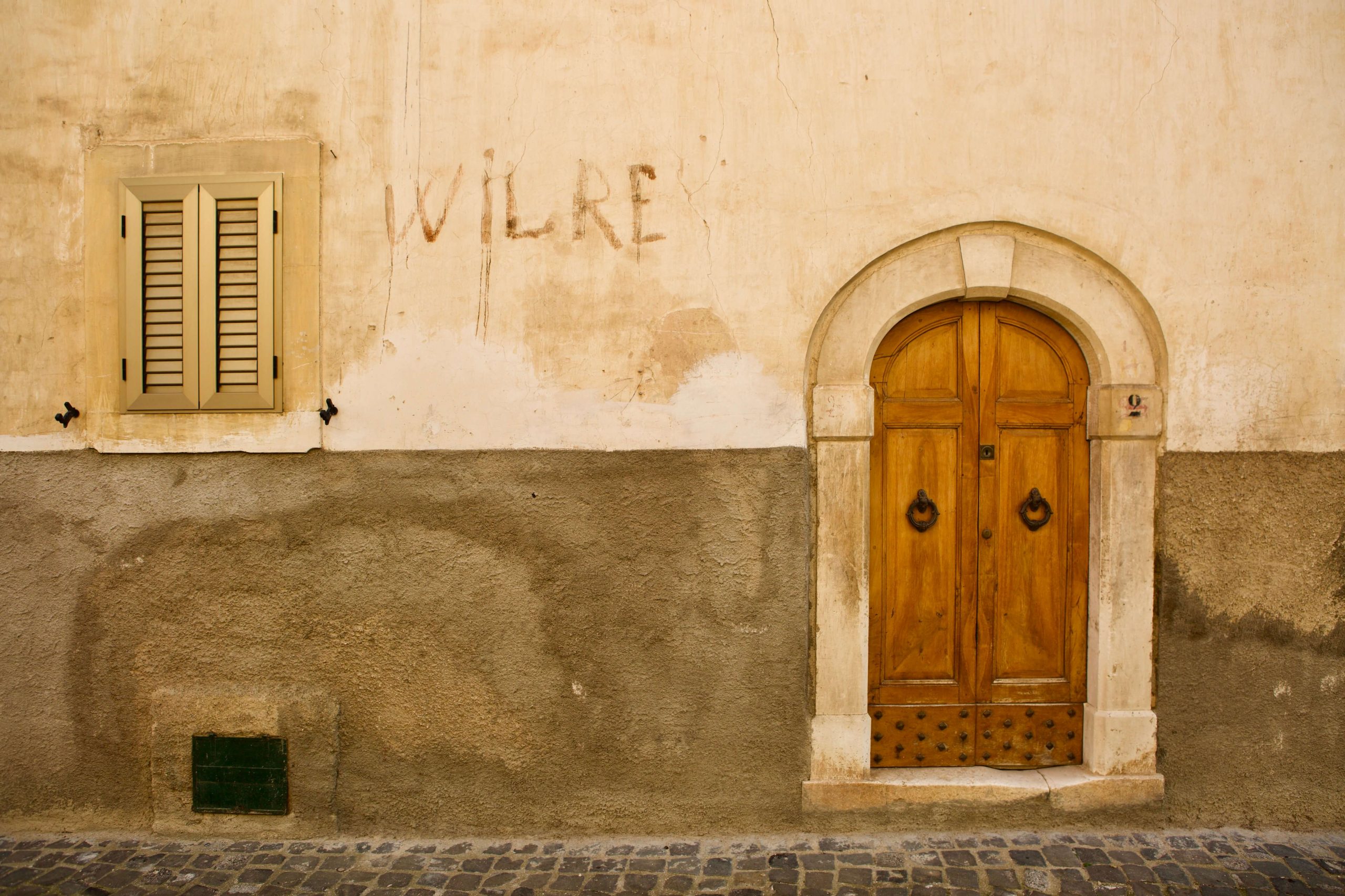
Just in time for the holiday season, we have a load of great stuff to beef up wine programs. Our newest arrivals include Romain Guiberteau and Brendan Stater-West’s new Saumur releases, François Crochet’s cru Sancerres that show freshness is not lost on that entire appellation in the face of climate change, Pierre Morey’s statuesque Meursaults, and David Duband’s reliable and finely tuned terroir exposé. I’ve written exhaustively about these producers (available on our site), so they don’t need more plugging. Plus, their quantities are spare. Our main focus in the first half of this month is the arrival of wines from future Austrian legend, Michael Malat. Indeed, I’ve extolled his talents many times before, but his range is growing along with his experience!
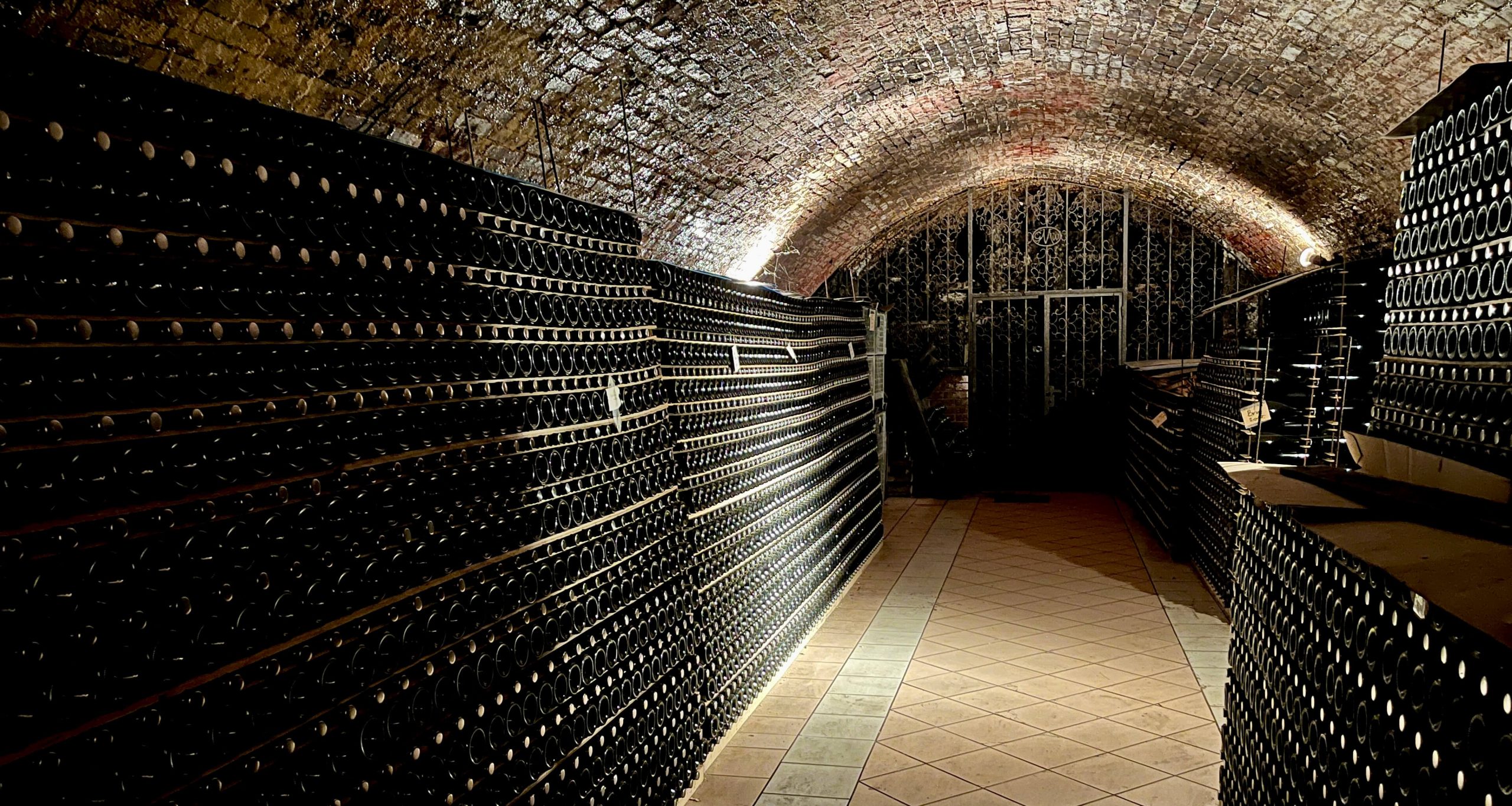
Michael Malat has it all: affordable and spectacular, premium wines that exceed expectations, full of terroir and joy in every category: red, white, rosé, sparkling, and orange. Malat found his breakthrough with the 2013 vintage, six vintages after his father, Gerald, put him in the driver’s seat. Since then, notable years were 2015 and 2017, and now 2019. Michi, as he’s referred to in Austria (pronounced Mickey), who’s only a hair over forty, puts to bottle wines marked with a similar throughline: deliciousness, depth and terroir purity. Uniquely, he manages to get his Kamptal Rieslings and Grüner Veltliners to express fruit nuances of the same color as his deeply hued yellow capsules and labels. These exotic but discreet yellow fruit notes filled with Amalfi Coast-like sunshine makes their intellectual stimulation even that much more pleasurable. From the top of the range to the bottom there are few in the industry who deliver such serious wine with so much glee.
Malat’s vineyards are mostly inside Kremstal (with some actually just inside of the Wachau), one of Austria’s most famous and equally geologically diverse appellations. All but his Pfaffenberg wine come from the Danube’s right bank (south side) where the hills slope more gently with multi-rowed terraces, while on the other side the hills are mostly treacherous, rocky sites facing south with more extreme exposure to the sun, similar in hillside structure to the neighboring Wachau. The flatter land on the south side has a greater level of loess (extremely fine-grained, calcareous, mineral-dense, wind-blown sand) in the topsoil. There are also sections on this side closer to the river on gravel and sand deposits where they grow some of the Pinot Noir grapes and others for the entry-level wines. Further upslope most of the vineyards in his top crus are usually covered to some degree with loess topsoil but are in closer contact with a solid bedrock of ancient acidic rock formations that date all the way back to Pangean times, hundreds of millions of years ago. Climatically, because of the tug-of-war between warm Pannonian winds and cold blasts from the Alps, it’s much colder than most of the rest of Austrian wine country, between the warmest and coolest areas of top Riesling and Grüner Veltliner production. Most of Malat’s vines were planted during his lifetime, despite the winery’s history dating back to the 1700s. This is largely due to his father’s ambition, which set the stage for Michael’s fabulous collection of vineyards in their middle age, perfect for wines of great balance.
We begin with bubbles. Michael’s father, Gerald, paved the way for Austria’s Sekt market in 1976. A straight shooter from the post-WWII Austria, post-Soviet occupation (until 1955) recovery generation, he pushed against the Austrian Republic’s law ordaining that only licensed producers could produce sparkling wines (Sekt in German). They also used local grape varieties, like Gelber Muskateller, Müller-Thurgau, Grüner Veltliner, and Riesling. After Gerald’s nationally followed fight and subsequent victory, it only took a few vintages for him to see that his wines were lacking in structure and finesse made from these local varieties when compared to those of Champagne. He already had Pinot Noir and Chardonnay planted but expanded his holdings during Michi’s childhood to provide his son with the superb material he uses to craft them today.

Both the 2017 Brut Rosé Reserve, made entirely from Pinot Noir, and 2017 Brut Nature Reserve, purely Chardonnay, are aged in bottle on their lees for four years, while the law only requires nine months. Gerald used to add a small dosage but today Michael adds nothing because of the fuller flavor and fruitiness that climate change has imposed on the wines. The results are substantial, and many consider them to be the best of their kind out of Austria. Only a hair above the price of the least expensive organic Champagnes made from small-house producers, they’re a good blind taste for Champagne buffs.
Curiosity, necessity, and keeping up with the times led Michael to develop orange wines starting in 2016, bottled now under the Malat label RAW. During the 2016 harvest the press broke when the Gewürtztraminer was perfectly ripe. Just as the “natural wine” movement was a topic of discussion and scorn in Austria, so was orange wine, but a decision had to be made to either leave the grapes on the vine until the press was fixed or give it a go with full skin maceration and put himself in the crosshairs of his colleagues. He explained that at the time in Austria there were only about ten producers making orange wines and only a few of them were good, at least to his Austrian winemaker’s palate. In classic Malat fashion, he was comfortable in the crosshairs.
Grapes that seem to fare better for orange wines are often excessively aromatic whites with pungent floral and sweet spice notes, reminiscent of strong perfume scents that evoke generations of family gatherings. Toward the northeast of Italy and into neighboring countries, like Slovenia and further east to Georgia, orange wines have been a thing since antiquity, perhaps the way all white grapes were made into wine long ago. From a stability standpoint, orange wines would’ve outmatched a white wine due to tannins and polyphenols extracted from the skins in more low-tech generations. The yields are surely higher compared to white grapes pressed upon arrival at the winery that still retain some juice even with rarely employed high pressure at a quality producer. Being that orange wines are nothing new to the Old World’s older world, they deserve some attention, not solely as a trend but as a legitimate category. I, for one, love good orange wines, which are less rare than in the past. As with any category, many are lazily crafted and poured into the natural wine river, while on the other side, orange wines from big producers must be just as innocuous, soulless and uninteresting as others on their marketing team’s menu. When craftspeople with a level of mastery of fundamentals in wine chemistry and viticulture play with orange wine the results can be consistently compelling yet still framed in wine classicism: harmonious, reliable, and of utmost importance to this taster–intricacy. Michael has achieved a level of mastery with his craft, fundamentals all the way to a certain level of artistry, and though the orange wines are relatively new to him, it doesn’t appear so.
Both of Malat’s orange wines are clean and elegant renditions with the 2021 Gelber Muscateller RAW more tense and bright by nature of the variety than the expectedly fuller and powerfully expressive 2021 Gewürtztraminer RAW. They spend between two and three weeks on the skins, age on their lees in large, old wood vats, naturally go through malolactic fermentation, and are bottled with low sulfur levels (given the greater natural stability extracted from the skins and seeds). The last batch we ordered evaporated, and though we tripled the order this time, it still won’t be enough.
Malat’s starter kit on the classic range is second to none in Austria, especially when price is a consideration. Labeled Furth, after the main town in the area, they demonstrate what can be done on a medium scale in production with superb results. All come from the right bank with those close to the river on flat vineyards and the others with a slight northern tilt. The 2021 Riesling “Furth” is mostly grown at higher altitudes further upslope on terraces and in closer contact with rocky bedrock and topsoil, as opposed to an endless bedrock and topsoil of loess further below that much of the 2021 Grüner Veltliner “Furth” is grown on. An additional detail to highlight on these two entry-level wines is that they are aged entirely in ancient 5,000-10,000-liter wood casks. This type of aging vessel polishes them out into more of a friendly analog frequency than the digital-like renditions from stainless steel. I’ve asked Michael why his wines are so specific and unique from other wines in the area and have yet to receive a clear answer. My guess is that it has to do with these ancient barrels and the three-hundred-year-old cellar. I guess I could coin the term “The Rayas-effect,” where taste is so specifically linked to a winery, despite the origin of the grapes. When I visited Château Rayas it smelled like I was inside a glass of his wine the whole time.
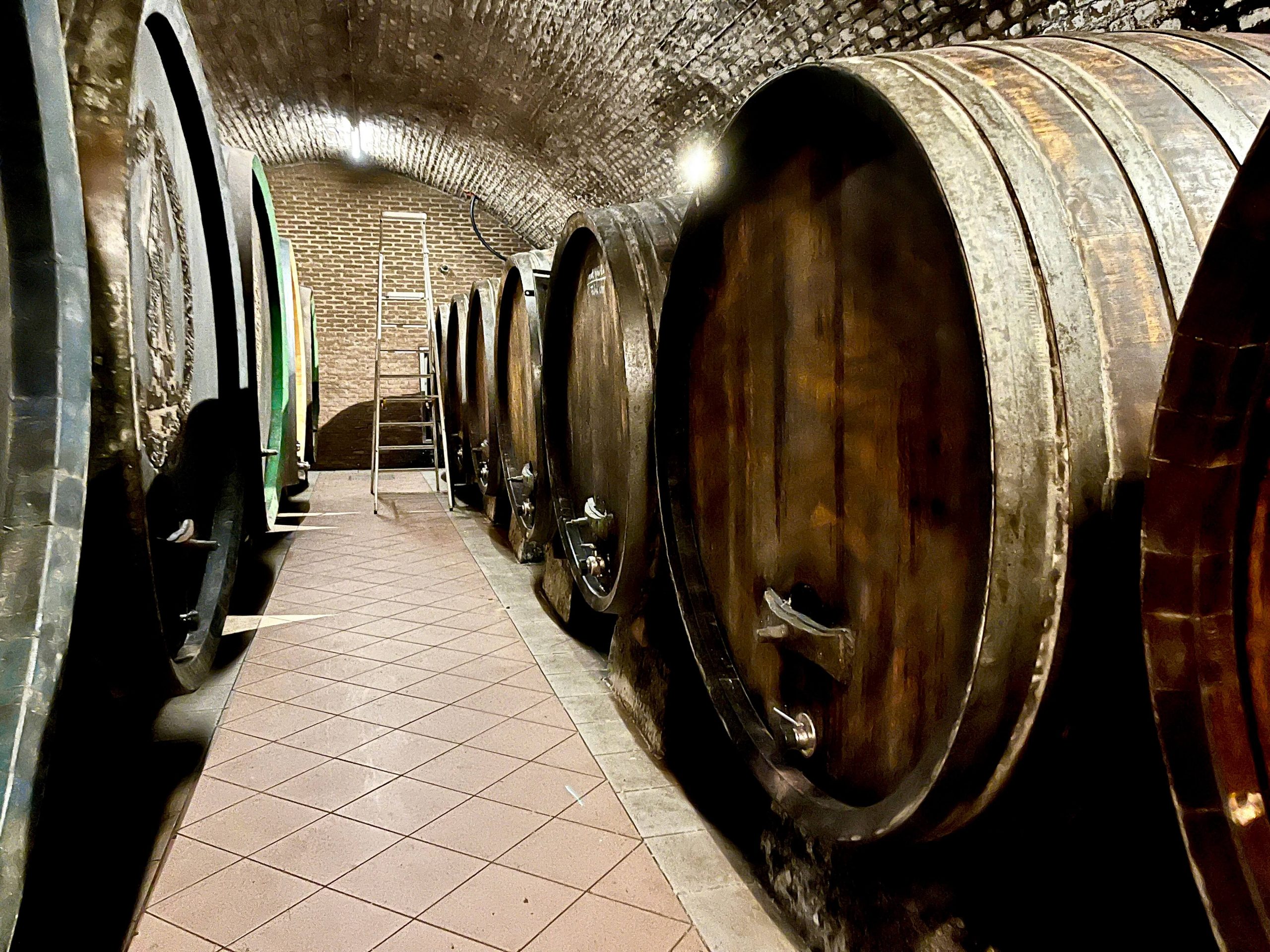
The Riesling is as expected: sharper, fresher, more minerally, angularly nuanced, and with a subtle range of yellow fruits, spice and delicate flowers. Riesling can be so Germanically serious sometimes that it’s refreshing to slurp Michael’s down without thinking so much. The Grüner Veltliner has more body by comparison to his Riesling, though it’s not a full-bodied wine by any stretch. The variety is generally friendlier by nature than Riesling for most consumers, and under Michael’s hand it captures one of the most compelling profiles for this grape variety (re: my preferences) compared to much of the rest of Austria. Emitting Ischian Biancolella-like sunshine and smiles, this starter to the Veltliner range is generous and refreshing—a welcome departure from the densely spiced and almost overwhelmingly herbaceous, cloying nature of Grüner Veltliner taken far too seriously in the cellar.
Many with less exposure to Austrian wine might be surprised to learn that Pinot Noir has been cultivated in Austria since the twelfth century. While it was initially grown in the warmer parts by the same order of monks that established Burgundy and Galicia, it crept into other regions as the climate warmed and made it possible to make solid Pinot Noir still wines instead being relegated to wiry rosés and sparkling wines. Grown further down the slopes closer to the Danube, the 2019 Pinot Noir “Furth,” comes from a fabulous year with sufficient ripeness for Pinot Noir to achieve its full robe of taut to fully mature red fruits while retaining its gorgeous and subtle florals. The soils here are largely composed of river alluvium with some in contact with loess. One cannot expect a Burgundian style wine here in the sense of texture and fruit notes. It’s simply impossible to completely replicate Burgundy outside of Burgundy, though there are many excellent Pinot Noir wines made in other parts of the world. Here, the textures are more pointed and slightly gravellier with aromatics that dance between the densely green north-facing hills covered in forest and bramble that borders all the vineyards to the south. Local herbs, flowers and berries, not the four-berry mix found in Côte d’Or Pinot Noir, but rather wild red and black currants, taut and bright wild cherries and blackberries, marked with a distinct Alpine quality.
I admit that if given the opportunity to choose between a great Austrian Grüner Veltliner and Riesling, nine and a half times out of ten, it’s going to be Riesling. However, 2021 Grüner Veltliners might be the vintage that changes that, as it was an exceptional season due to the high ripeness of the grapes with an unusually high amount of acidity for this level of maturity. They are structured and deeply pleasurable. If you have a liking for Grüner Veltliner, don’t sit out 2021.
Hohlgraben has been part of the Malat’s family vineyards since 1722 (think about that…), and for this reason, Michael describes it as the “classic Malat wine.” As with all years, the 2021 Grüner Veltliner “Hohlgraben” takes on its personality from a set of terraced vineyards at an altitude of 250-300m with loess topsoil on top of alternating layers of alluvium and loess—a consequence of cyclical erosion and deposition by way of Danube flooding and windblown loess depositions blown in from the Alps. Wines grown on loess tend to be more rounded and juicier than those from rocky bedrock, which, by contrast, usually imparts more angles and deeper mineral impressions. Grüner Veltliner doesn’t like to struggle in the vineyard, nor does it need to do so to find its happy place, unlike Riesling. Loess offers Veltliner optimal conditions due to its higher water retentive capacity and nutrient levels, which are also less favorable for high quality Riesling. The results are a spicy and easy-to-drink yet serious Veltliner with a medium body rather than the fuller ones often found across the river on the Wachau’s south-facing vineyards. Despite its immediate accessibility, it retains the interest of the taster with its palate-refreshing acidity and minerally qualities.
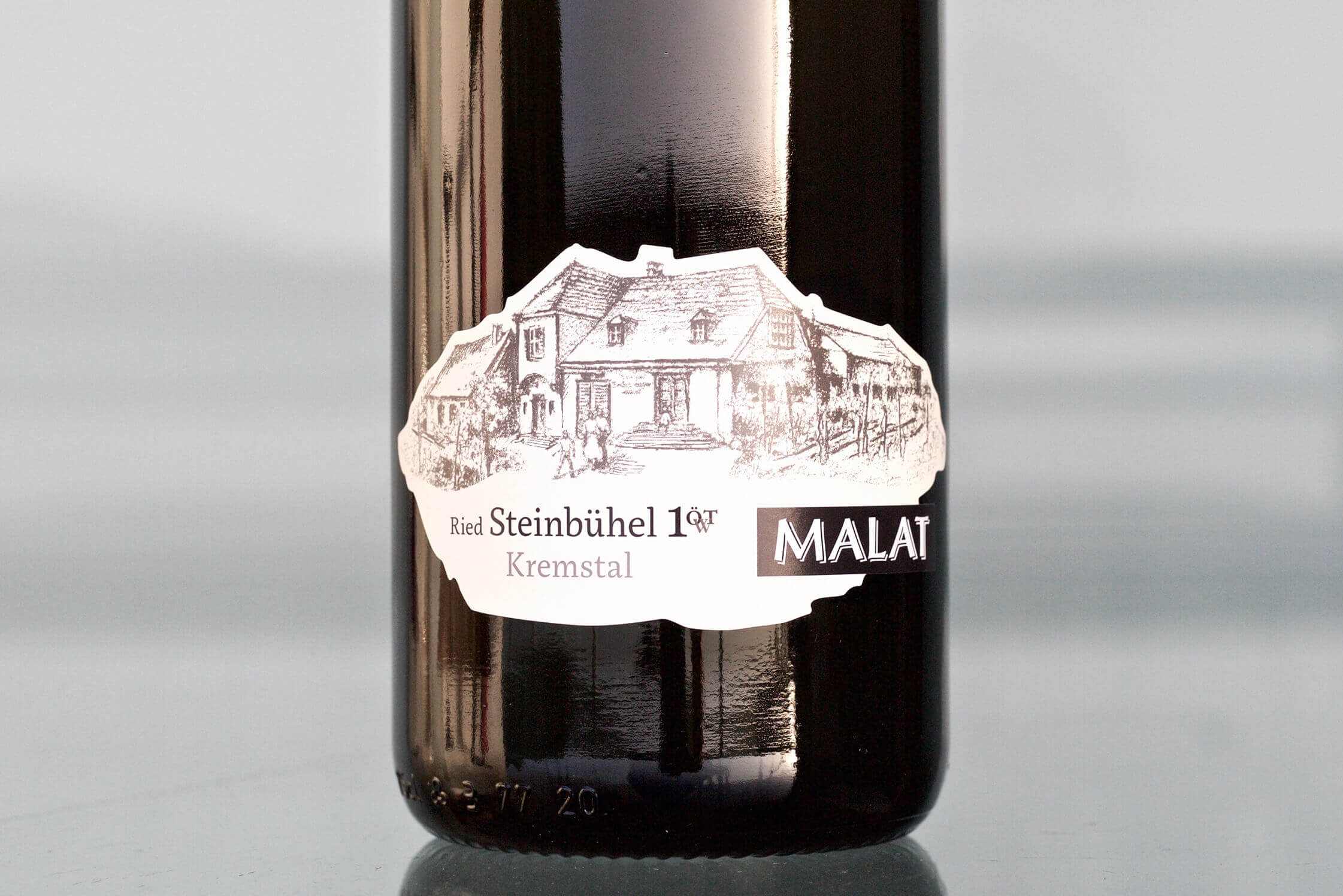
A name from the Middle Ages that means “sharp ledges on the ridges,” Malat’s 2019 Grüner Veltliner 1ÖTW Gottschelle is their top site for this variety. This premier cru classified wine—abbreviated in Austria as 1ÖTW—sits atop a granulite bedrock with the vine roots mostly in contact with a deep topsoil composed of calcium-rich loess (fine wind-blown sand) and a layer cake of gravels further down, deposited there by the Danube during the most recent ice age, but the bedrock is so deep that most vine root systems may not make contact with it. Like all of Malat’s top Rieslings and Grüner Veltliners, Gottschelle is raised in 2000-2500-liter old foudres for six to eight months. This is the winery’s biggest Grüner Veltliner and expresses a forward spiciness and minerality with supporting notes of white and orange fruit, iodine, and dried grasses and grain.
Malat’s Riesling Premier Cru trilogy is indeed special. First is the 2019 Riesling 1ÖTW Steinbühel, a name that dates all the way back to 1322 and means “stone hill.” Grown on a bedrock of granulite (a high-grade metamorphic rock similar to gneiss) with a loess-rich topsoil mixed with eroded bedrock, it’s perhaps the most elegant in Michael’s range of top-flight Rieslings, while the 2019 Riesling 1ÖTW Silberbichl has strength in its mineral impressions and broader power than Steinbuhl. Known as Silberbichl since the fourteenth century, which means “silver hill,” it’s named after the shimmering silvery reflection of the mica schist bedrock and topsoil best observed with the sun’s rays lower on the horizon. The newest member of the lineup is one of the rare wines made at Malat from someone else’s vineyard: The 2019 Riesling 1ÖTW Pfaffenberg is a glorious addition to the range and wonderfully demonstrates how structurally different and contrasting the mouthfeel of wines are from this side of Kremstal on the gneiss rock compared to those on bigger terraces with deeper topsoil on the south side of the Danube with dozens of vine rows on each terrace. Pfaffenberg’s terraces hold nearly a maximum of two or three vines per terrace because of the steepness of the hillside. A family friend with a small parcel offered her Riesling fruit to Michael for the first time prior to harvest. Of course, Michael had to accept on both the level of friendship and the curiosity to work with this celebrated vineyard perched on a massive hillside cliff that seems ready to fall right into the Danube below at any minute. The wine is simply spectacular and maintains Michael’s predilection for immediate pleasure with seriousness surely to be found, though further inside after some time open.
Checkout Michael explaining his wines at https://thesourceimports.com/videos/

It wasn’t just us. Everyone in Europe complained this year about the endless heat and massive mosquito invasion. It was a blistering summer, exhausting, a time when mosquitoes should’ve been hiding in cold basements waiting for cooler nights before pestering. Not this year. Shadows and corners in every hot room had one or two waiting, moving from one spot to another to keep you guessing. Mosquitoes all day. Mosquitoes all night. Hot days and hot nights. Humidity unlike any year before, according to locals. Can’t open the windows because few European rental homes have screens, and even fewer have AC. Open windows at night offered no relief. The Mediterranean wasn’t refreshing either. It was hot! One minute out and you want back in. REM sleep wasn’t possible until utter exhaustion.
Blooming mosquitoes populations are only one of many consequences of climate change, like changing weather patterns, extreme flooding, which in some places, like Germany, some have increased mosquito populations tenfold (read more here). Here’s an obvious statement: Nature is out of balance. Some, often with a degree of condescension, say “We’ve had hurricanes and tsunamis forever. The planet has warmed like this before. It’s all a lie for x, y, z.” European wine producers are often conservatives too. They’re countryside folk. But they know the only lie is: it’s a lie. They’re seeing it firsthand. The moment of budbreak to harvest has completely changed. Everyone with a history in wine feels the new boozier norm, the richer and cleaner fruit, less earthiness and more solar power, a flatter, less fresh style. Yes, The Times They Are A-Changin’. Amended lyrics?
Come gather ‘round people
Wherever you roam
And admit that the waters
Around you have gone
And accept it that soon
You’ll be dry to the bone
If time to your kids is worth savin’
And you better start conservin’
Or they’ll be dry as a stone
For the times they are a-changin’
Over the years I’ve posed the question to growers about the difference in time between budbreak and picking in an attempt to understand the actual differences in terms of growing-season days compared to the past. In theory, when it comes to complexity, the length of the growing season is more important than how late in the year the grapes are harvested. In many recent years budbreak was early and the entirety of the growing season (the number of days in all from start to finish) wasn’t as short as it is now, compared to even ten years ago. There were many seasons shortened by a week or two in total, but budbreak happens even earlier and the full length of the growing season is also short, very short—by as much as a couple months in some places, no foolin’. The impacts of these elements have many implications, and not all of them are negative. For example, fruit picked in the earlier side after drier months are less impacted by botrytis, leading to fresher and cleaner nuances.
I’ve told my friends many times that my generation is the last who might ride things out without completely devastating consequences. None of us, ni moi, take enough measures to make a dent in the right direction. Little adaptations are important and helpful on some level, but we’re not going to save this sinking ship by only pumping the water out when there’s a massive gash in the bottom.
At forty-six I still feel young most of the time. I suppose I’m about halfway to the end, but I hope I’ll have a little longer. When I enter partnerships with producers under thirty years old now, I don’t feel so young anymore. We visited one of our new ones, a young, twenty-something winegrower in Barolo a few weeks ago (who will remain nameless for the moment) who took over the family’s cantina after finishing her university studies. As I sent a mosquito to the next life from my arm in the cellar, the conversation began; she too had had an unbearable mosquito season. She started reeling off statistics of insect reduction and the decreased population of birds which has further opened the door for a mosquito explosion. When she brought up the birds my mind trailed off back to a few days prior when I made an unwanted contribution to the bird statistic just outside of Basilicata’s historic and gorgeous rock city, Matera. A tiny member of a flock of about a dozen bounced off my front bumper and tumbled behind us as I watched in the rearview, grimacing and feeling horrible. Immediately distraught, I told myself that I somehow didn’t have a choice in that event. My wife didn’t notice our involuntary birdslaughter, or that I immediately went from smiles to momentary devastation and remorse. It was probably chasing a mosquito but I killed one of ours. Damn.
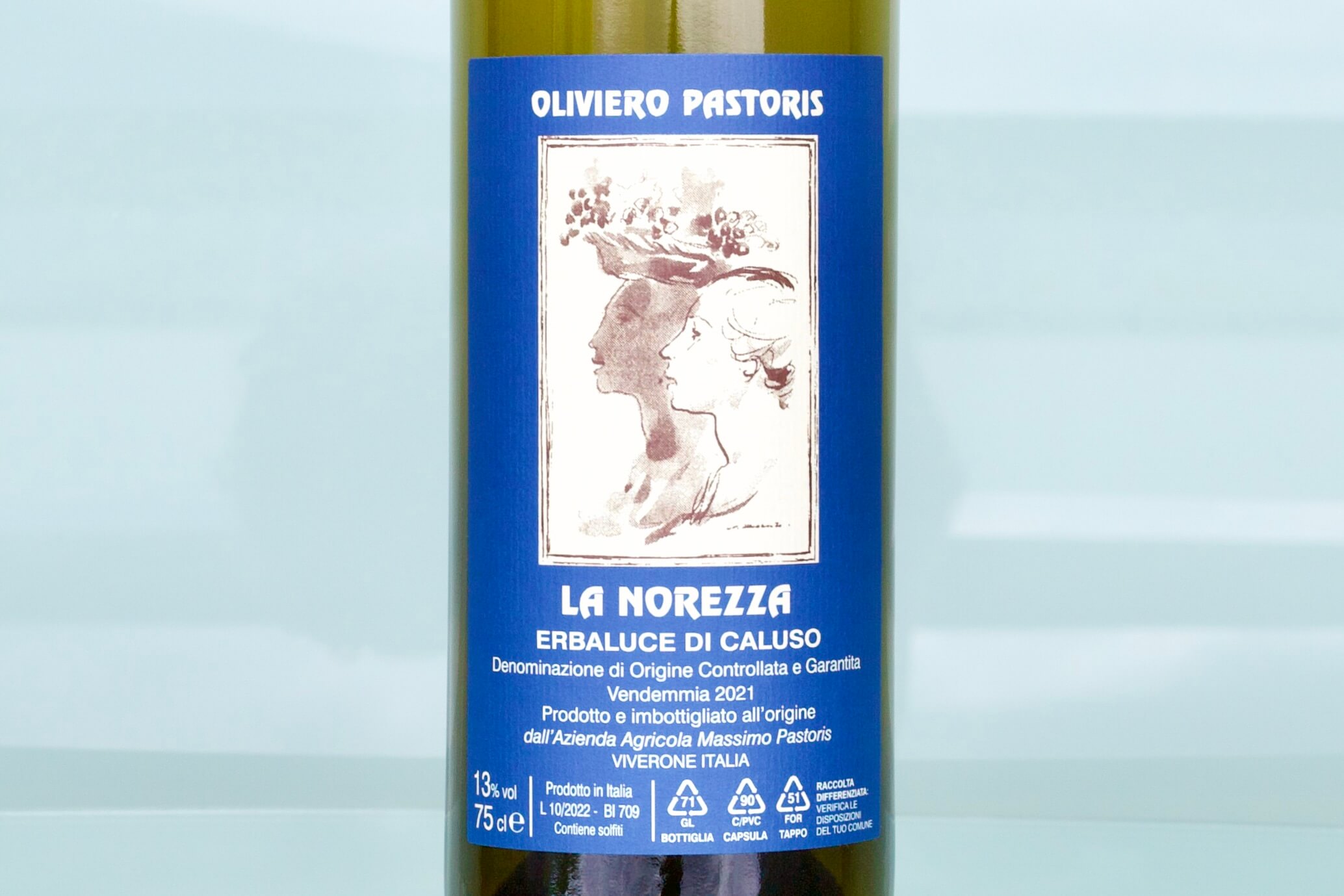
A few days later in Bramaterra, October 19, Andrea Monti Perini opened his cellar door and a swarm of mosquitoes charged. It was warm and dry, and they were thirsty. “Zanzare in late October in Alto Piemonte… That’s new,” Andrea quietly lamented. Their numbers were too great in vineyards to keep my hands on the drone remote. Like in Madonna’s Vogue music video, my wife elegantly and rhythmically maneuvered her hands around my face and hands warding them off, doing the modelesque gestures for me as I filmed, especially during our visit between to two lakes in Northern Piemonte with a new and exciting young producer in Caluso, though on the far northeastern edge of the appellation. Eugenio Pastoris, from Azienda Agricola Massimo Pastoris, focusses on Erbaluce and Nebbiolo—both excellent and with great promise, though the quantities are small. At only twenty-six-years old, he has degrees in Mechanical Engineering and Latin—an extremely clever young man (see, I even sound like an old guy now) with generously spirited and supportive parents. People complain about the younger generations, but what generation didn’t complain about the new ones? Today’s tepid efforts on climate change have diminished my faith in humanity, but these younger generations will be better than ours. Their eyes are open. They know they have everything to lose. It’s us older, more established ones who are the problem. We see the change and the need to react, but perhaps in our psyche we know our time is nearer to the end, so we talk too much and act too little.
As I write this in late October, it finally feels like fall again. We’re happy to be back in Portugal in the cooler weather and this season’s welcome torrential rainfall. The reservoirs across the country were getting pretty low, especially with the rivers that originate in Spain where many Spanish wanted to cut off the river supply to Portugal, forgoing their bilateral agreements. Thankfully that didn’t happen and I think things might become more stable again, for the moment.
